Terracotta
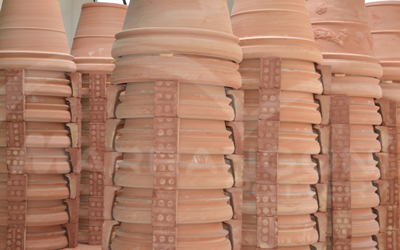 The terracotta is a hard and resistant material achieved by a firing process at about 1000°
centigrade of a mixture made of clay and inert material,
usually sandstone. It's known throughout
the world and can be produced in raw materials such as bricks for houses, but also other items,
thanks to the easily malleable nature of the clay.
The terracotta is a hard and resistant material achieved by a firing process at about 1000°
centigrade of a mixture made of clay and inert material,
usually sandstone. It's known throughout
the world and can be produced in raw materials such as bricks for houses, but also other items,
thanks to the easily malleable nature of the clay.
In Tuscany, in the area of Florence and
Siena,
the craft of garden pottery has been developed over the centuries and is famous throughout the world
for its elegant and refined desing and also for the quality of the clay. The subsoil of Tuscany is
rich in quality clay with high mechanical strenght and this allows the production of very large pots,
greater than 100 cm in size. Without going into specific technical details, we can say that the
important features of a terracotta pot are:
- the clay used
- the design
- the production techniques
- the firing process
The Tuscan terracotta is obtained by the best of these features is definitely the best
garden terracotta in the world. This is mostly due to the high quality in Tuscan which
has allowed this craft to be developed over the centuries. The clay of Impruneta and
Siena are among the best clays in the world due to the presence of Galestro and iron oxide.
These clays can be used to produce pots with high mechanical strenght and porisity which is
ideal for plant life. The high firing temperature and the processing techniques along with
the quality of the clay allows us tu get a terracotta which is frost-resistant and durable:
in Tuscany there are terracotta which are over 300 years old. The centuries of experience
allow accurate modeling of sophisticated Tuscan style, but also a simple and modern design
can be achieved thanks to the use of colored clays.
It is possible that none of this
would have happened without the typical clay of Tuscany.

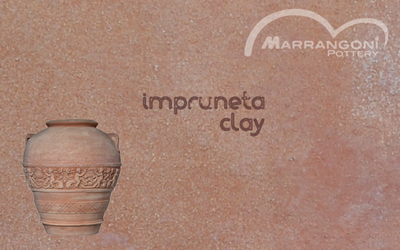 This clay is the best in the world for mechanical strength and frost
resistance, thanks to the presence of Galestro, a soft rock typical of the
area of Florence, Impruneta, which gives the finished product frost
resistance at over 20 degrees below zero. The Impruneta clay has an grainy
texture which makes it rough to the touch and reddish color with white
shades. The pots produced with this clay are top of the range and are often
found in very important gardens all over the world. The design is refined and
very well made. If the pots are made using the
This clay is the best in the world for mechanical strength and frost
resistance, thanks to the presence of Galestro, a soft rock typical of the
area of Florence, Impruneta, which gives the finished product frost
resistance at over 20 degrees below zero. The Impruneta clay has an grainy
texture which makes it rough to the touch and reddish color with white
shades. The pots produced with this clay are top of the range and are often
found in very important gardens all over the world. The design is refined and
very well made. If the pots are made using the
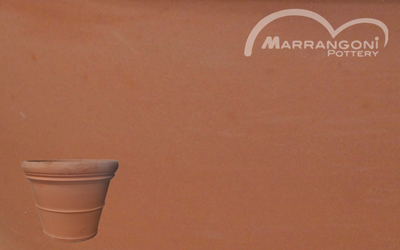 This clay is mined from the hills around Siena and is the second best clay
after Impruneta for producing large pots. The clay is rich in iron oxide
which, after the firing process, gives the clay a uniform dark red colour,
typical of Tuscany, which was very popular in the United States in the
1980s. These pots are frost resistant to up to 15 degrees below zero and
our customers in northern Europe have been satisfied with the products. The
models, as a result of the ancient Sienan tradition, are elegant and finely
made and have either modern or classic Tuscan style with an antique finish.
The products made with Siena clay are much less expensive than products
with Impruneta clay but are still very good in terms of the quality and
beauty of the design.
This clay is mined from the hills around Siena and is the second best clay
after Impruneta for producing large pots. The clay is rich in iron oxide
which, after the firing process, gives the clay a uniform dark red colour,
typical of Tuscany, which was very popular in the United States in the
1980s. These pots are frost resistant to up to 15 degrees below zero and
our customers in northern Europe have been satisfied with the products. The
models, as a result of the ancient Sienan tradition, are elegant and finely
made and have either modern or classic Tuscan style with an antique finish.
The products made with Siena clay are much less expensive than products
with Impruneta clay but are still very good in terms of the quality and
beauty of the design.
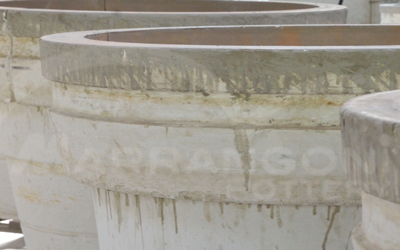 The best pottery is hand-made and has a production time that varies from 25
to 40 days, depending on the size of the object and the production season.
The greater the size and the colder the season will increase the length of
the cycle of processing and drying.
The production cycle consists of the following steps:
The best pottery is hand-made and has a production time that varies from 25
to 40 days, depending on the size of the object and the production season.
The greater the size and the colder the season will increase the length of
the cycle of processing and drying.
The production cycle consists of the following steps:
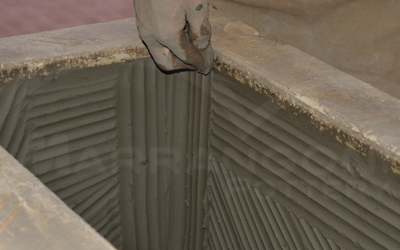
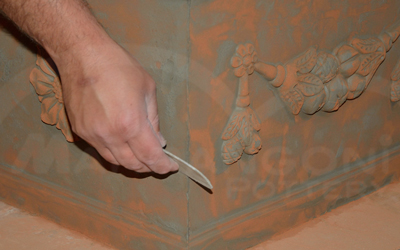
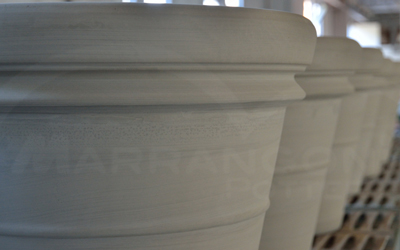
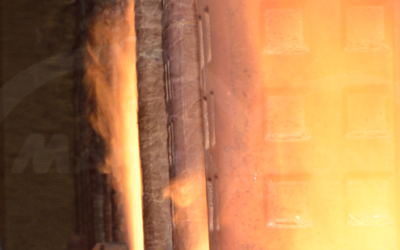
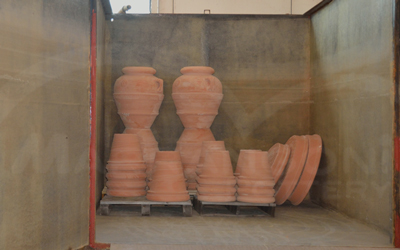
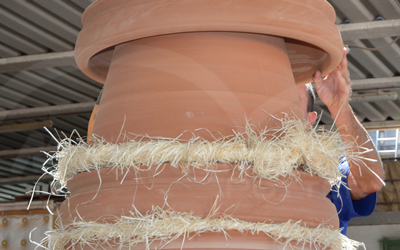
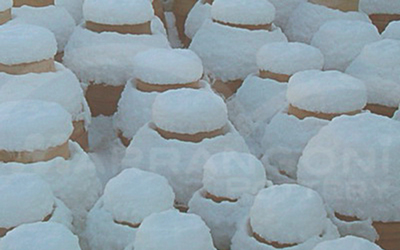 Each item produced and distributed by Marrangoni Pottery is frost
resistant. However, this does not mean that the clay is impermeable to
water. Indeed, one of the characteristics of the clay is the porosity which
allows the plants have a better supply of oxygen to the roots.
Indeed, in winter the pores can be filled with water which expands
when frozen and could break even the
Each item produced and distributed by Marrangoni Pottery is frost
resistant. However, this does not mean that the clay is impermeable to
water. Indeed, one of the characteristics of the clay is the porosity which
allows the plants have a better supply of oxygen to the roots.
Indeed, in winter the pores can be filled with water which expands
when frozen and could break even the